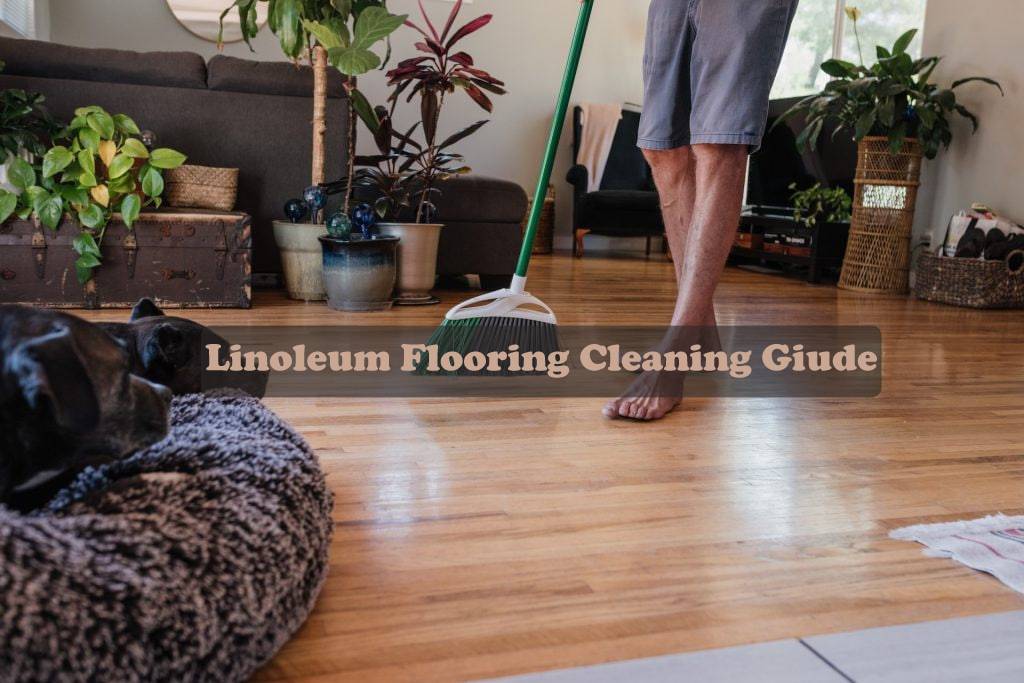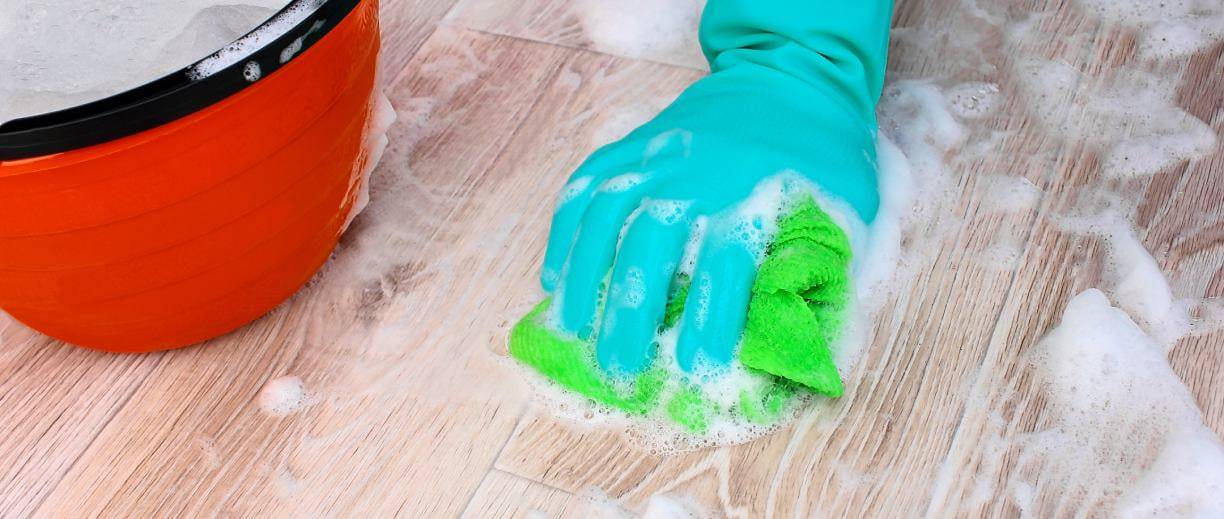Bring out the shine in your linoleum floors! Durable, affordable, and easy on the eyes, linoleum offers a classic flooring option that’s stood the test of time. But even resilient linoleum needs some TLC to stay looking its best. This guide will walk you through everything you need to know, from deep cleaning to quick maintenance routines. Get ready to revitalize your linoleum and keep it sparkling for years to come!
Love the look of linoleum but worried about upkeep? Dex Flooring offers a wide variety of flooring options, including easy-care, durable linoleum! Visit us today or browse our selection online to find the perfect floor for your home.
Deep Cleaning for Your Linoleum Floors
Linoleum floors offer a beautiful and practical choice for your home, boasting durability and a classic aesthetic. While they share some cleaning similarities with hardwood floors, linoleum requires a gentler touch. Harsh chemicals and excessive moisture can damage the finish and underlayment, so ditch the ammonia and grab some natural cleaning power! Here’s your step-by-step guide to deep cleaning your linoleum floors without causing any harm:
1. Banish Dust and Dirt:
The deep clean begins with a thorough prep. Set your vacuum to the “hard floor” setting and give your linoleum a good once-over. Pay special attention to corners, baseboards, and under furniture (if accessible). Don’t forget to move furniture out of the way for a complete clean.
2. Microfiber Magic:
Even the most powerful vacuum might leave behind some dust bunnies and debris. To truly polish your floor, grab a microfiber mop. This gentle warrior will capture those tiny particles without scratching the linoleum’s surface.
3. Mix Up a Mild Marvel:
Fill a bucket with a gallon of hot water. Add ten drops of your regular dishwashing liquid – a gentle yet effective cleaning agent. Feeling fancy? For a touch of aromatherapy while you mop, add a few drops of your favorite essential oil, like lemongrass or lavender. Stir your concoction well, and get ready to unleash its cleaning power!
4. Mop and Conquer:
Dampen your mop in the cleaning solution and wring it out thoroughly. Remember, excess moisture is the enemy! Mop a manageable section of your floor, around six square feet at a time. Rinse your mop frequently in the bucket, wring it out well, and move on to the next section. While you’re at it, why not extend your cleaning magic to those dusty baseboards?
5. Rinse and Repeat:
Now it’s time to rinse away any dirt and soapy residue. Wash your mop and bucket in the sink, then refill the bucket with clean, hot water. Rinse the entire floor section by section, remembering those corners and baseboards to prevent grime buildup.
6. Farewell, Moisture!
After the final rinse, it’s crucial to remove any remaining moisture. While a clean, dry mop can do the trick, using towels to hand dry your floor is a slightly more effective way to ensure no water damage.
Congratulations! You’ve just given your linoleum floors a deep clean and restored their beautiful shine. Stay tuned for some easy routine cleaning tips to keep your floors looking fabulous for years to come!
Routine Linoleum Cleaning
Keeping your linoleum floors sparkling doesn’t require harsh chemicals or constant deep cleaning. Embrace the power of natural ingredients and create your own DIY cleaning heroes for a healthy and beautiful floor!
Vinegar Powerhouse:
Distilled white vinegar – your eco-friendly knight in shining armor! This all-purpose cleaner disinfects while tackling grime, making it a perfect choice for routine linoleum maintenance. The mild acidity cuts through dirt without harming the surface. Simply mix one cup of vinegar with a gallon of hot water in a bucket. Wring out your mop thoroughly and get mopping! There’s no need to rinse as the vinegar evaporates, but ensure you dry the floor completely to prevent water marks.
Baking Soda: The Stain Slayer
For those inevitable spills and scuffs, baking soda swoops in as your stain-fighting champion. This natural wonder boasts mild abrasive properties that break down grime and tackle stubborn stains. Creating a baking soda paste is easy: mix enough water with baking soda to form a thick consistency. Apply the paste to the stain using a damp microfiber cloth and gently scrub. Rinse the area with clean water and dry completely. This hero works wonders on scuff marks and most food stains. For tougher foes like ink, pre-treat the stain with a small amount of baking soda paste before scrubbing.
Baby Oil: Shine Reviver
Linoleum floors, like superheroes, sometimes need a little extra protection and a boost of shine. Manufacturers recommend periodic polishing to maintain that dazzling look. Here’s where baby oil, your shine reviver, enters the scene!
Important Note: Ensure your floor is completely dry after deep cleaning before applying the polish. For a safe and budget-friendly polish, whip up this magic potion: combine one cup of white vinegar, five drops of baby oil, and a gallon of hot water in a bucket. Damp mop the floor and let the solution dry, revealing a radiant shine!
Final words
So there you have it! With a little routine cleaning and the power of these natural heroes, your linoleum floors can stay beautiful for years to come. Remember, consistency is key! Regular mopping with vinegar solution, tackling spills with baking soda paste, and an occasional polish with the baby oil mix will keep your linoleum floor looking its best. Enjoy the satisfaction of clean floors and a healthy home, all achieved with the power of natural ingredients!
FAQs
1. Can I use essential oils in my everyday linoleum floor cleaner?
Absolutely! While the vinegar solution is fantastic for routine cleaning, a few drops of your favorite essential oil can add a delightful touch. Lemon, lavender, and tea tree oil are popular choices for their fresh scents and potential disinfecting properties. Just remember, a few drops are enough – too much essential oil can leave a residue.
2. Are store-bought linoleum floor cleaners okay to use?
While natural cleaners are ideal, some store-bought options are safe for linoleum. Look for cleaners specifically designed for linoleum floors and avoid harsh chemicals like ammonia or bleach. Always test any new product in a small, inconspicuous area before using it on your entire floor.
3. Is steam cleaning safe for linoleum floors?
Yes, steam cleaning can be a great way to deep clean your linoleum floors. However, be cautious! Excessive heat or moisture can damage the surface. Use a steam mop specifically designed for hard floors and ensure the steam setting is low. Test a small area first and avoid letting the steamer sit in one spot for too long.
4. What are some green cleaning alternatives for stubborn stains?
For particularly tough stains, baking soda is a fantastic first line of defense. However, if it doesn’t do the trick, consider these eco-friendly options:
- Castile Soap: Mix a tablespoon of castile soap with a cup of water in a spray bottle. Test on an inconspicuous area before applying directly to the stain.
- Lemon Juice: The natural acidity of lemon juice can help tackle some stubborn stains. However, use it sparingly as it can be slightly bleaching. Dilute it with water and test before applying.
5. How often should I deep clean my linoleum floors?
A deep clean with a solution like the vinegar and water mix is generally recommended once or twice a year. However, the frequency can depend on factors like foot traffic and the presence of pets. For heavily used floors, a deep clean every few months might be necessary.


